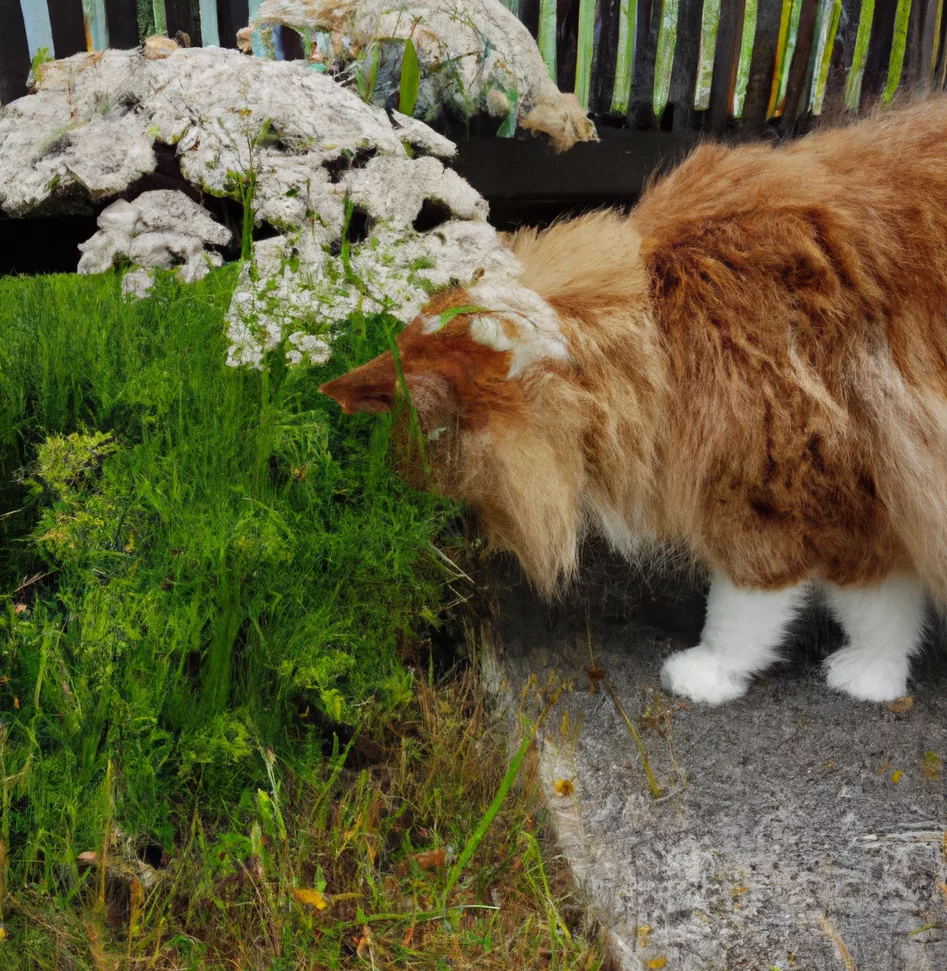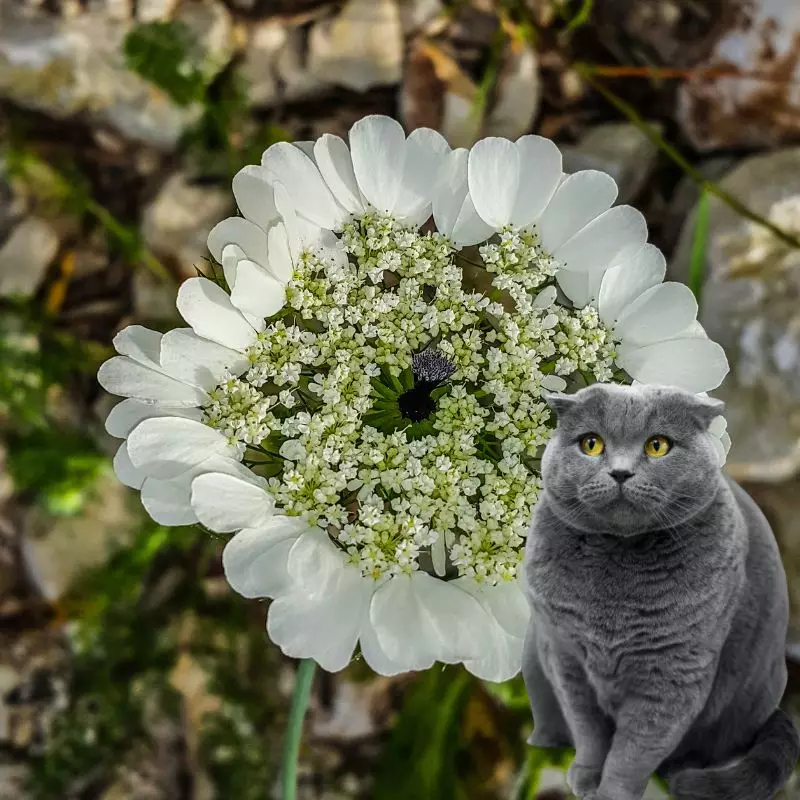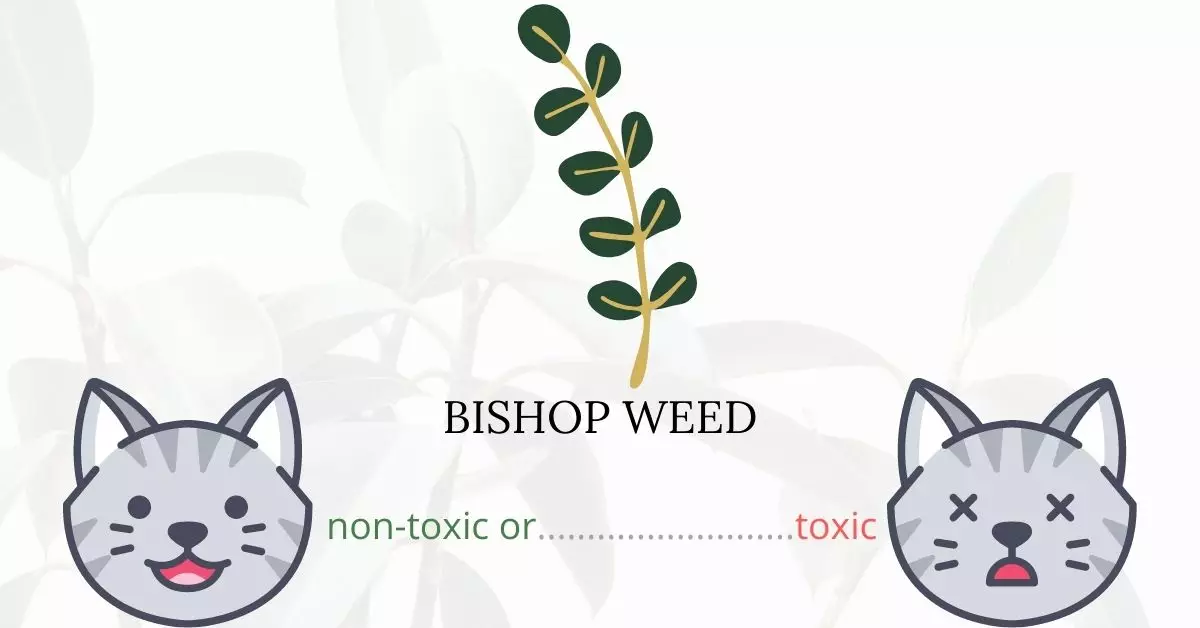Bishop’s Weed, often referred to as Greater Ammi or False Queen Anne’s Lace, is indeed toxic to cats. The primary culprits behind its toxicity are the insoluble calcium oxalates and furanocoumarins it contains. When ingested, furanocoumarins can cause severe photosensitivity in a cat’s skin, affecting all external organs, including the eyes. In severe cases, exposure can result in permanently damaged corneas, potentially leading to blindness.
This article was prepared in close collaboration with a team of experienced DVMs (doctors of veterinary medicine). Their invaluable expertise ensures that we provide you with accurate and up-to-date information regarding the potential dangers of various plants, focusing on Bishop Weed in this context. Furthermore, our research is augmented by information sourced from high-authority websites such as the ASPCA and PetMD. Through this comprehensive approach, our aim is to safeguard your feline companions by keeping you well-informed.
Clinical Signs of Bishop Weed Poisoning in Cats

When a cat comes into contact with, inhales the aroma of, or consumes Bishop Weed, it might manifest several concerning symptoms due to the plant’s toxic components. Here’s a detailed breakdown:
- Photosensitization: This is a heightened sensitivity to light. It occurs because furanocoumarins in Bishop’s Weed can make a cat’s skin more prone to light-induced damage. When the skin absorbs sunlight, the chemical compounds exacerbate the effects, leading to skin issues.
- Ulcers or Open Wounds: The toxic components of Bishop’s Weed can cause the cat’s skin to develop ulcers, especially on sensitive areas like the ears, muzzle, or vulva. This is mainly due to the photosensitivity induced by furanocoumarins, making these regions more susceptible to light and thus more prone to injury.
- Blindness and Cloudy Corneas: The eyes are particularly vulnerable to the effects of Bishop Weed. When the furanocoumarins lead to photosensitization, the eyes can be damaged, potentially resulting in cloudiness of the corneas or even blindness.
- Photophobia (Light Sensitivity): Due to the photosensitization effect, cats may become exceptionally sensitive to light, actively avoiding well-lit areas or squinting excessively when exposed to bright conditions.
- Mouth, Tongue, and Lips Irritation: The insoluble calcium oxalates present in Bishop’s Weed are sharp microscopic crystals. When ingested, these crystals can penetrate the soft tissues of a cat’s mouth, causing irritation, burning sensations, and discomfort.
- Vomiting: If a cat consumes Bishop’s Weed, the toxins can irritate the gastrointestinal tract leading to vomiting as the body tries to expel the harmful substance.
- Excessive Drooling: This can be a direct response to the irritation caused by insoluble calcium oxalates in the cat’s mouth or a general response to nausea if the plant is ingested.
It’s crucial to recognize these signs early and seek veterinary assistance to ensure the well-being of your feline companion.
First Aid and Treatment of Bishop Weed Poisoning in Cats

Proper and immediate veterinary care is essential in any type of poisoning in cats. Do not give any medication or perform any procedure at home without consulting your veterinarian.
To remove any lingering toxins from your cat’s system, the veterinarian will most likely induce vomiting. Your cat can be given activated charcoal to absorb harmful residues in his stomach and expel them through his stool. The veterinarian may also perform gastric lavage if necessary. Your veterinarian may hold your cat for a few days for additional observation depending on the severity of the bishop weed poisoning.
Recovery from Bishop Weed Poisoning in Cats

Most cats recover well from bishop’s weed poisoning if treated quickly. For a period of time, your cat will need to be kept indoors and away from bright light until the poison has been digested and cleared from his system. A follow-up visit to the veterinarian is essential to ensure that your cat’s organs are functioning properly and that they are not experiencing any extra side effects. Your cat should be able to recover completely with adequate care.
Prevention of Bishop Weed Poisoning in Cats
Remove bishop weeds in your surroundings. Make sure your cat avoid areas where bishop weeds grow to prevent exposure. Keep your cat occupied and mentally stimulated inside your home.
If you love plants but have cats at home, check out these lists:





